Nestled in the foothills of Monte Grappa in northern Italy, Bassano del Grappa stole my heart the moment I stepped onto its iconic wooden bridge. The Ponte Vecchio, also known as Ponte degli Alpini, stretches gracefully across the Brenta River, offering picture-perfect views that will fill your Instagram feed with envy-inducing shots.
This charming wooden structure isn’t just a crossing point—it’s the beating heart of Bassano and the perfect starting point for exploring this hidden gem of the Veneto region.
I spent hours wandering through the Old Town’s narrow streets, camera in hand, constantly looking up at the breathtaking backdrop of green mountains. At 1,775 meters tall, Monte Grappa creates a stunning natural frame for this historic town.
The bridge itself is wider than you might expect, with a covered wooden walkway that’s been carefully preserved despite centuries of history and several reconstructions.
What makes Bassano truly special is how it balances natural beauty with cultural richness. After crossing the famous bridge, I discovered century-old grappa distilleries where I sampled the strong spirit that shares its name with the mountain.
The cool river breeze made the wooden bridge a perfect respite from the afternoon heat, while the surrounding cafés offered ideal spots to people-watch and plan my next adventure in this Italian treasure.
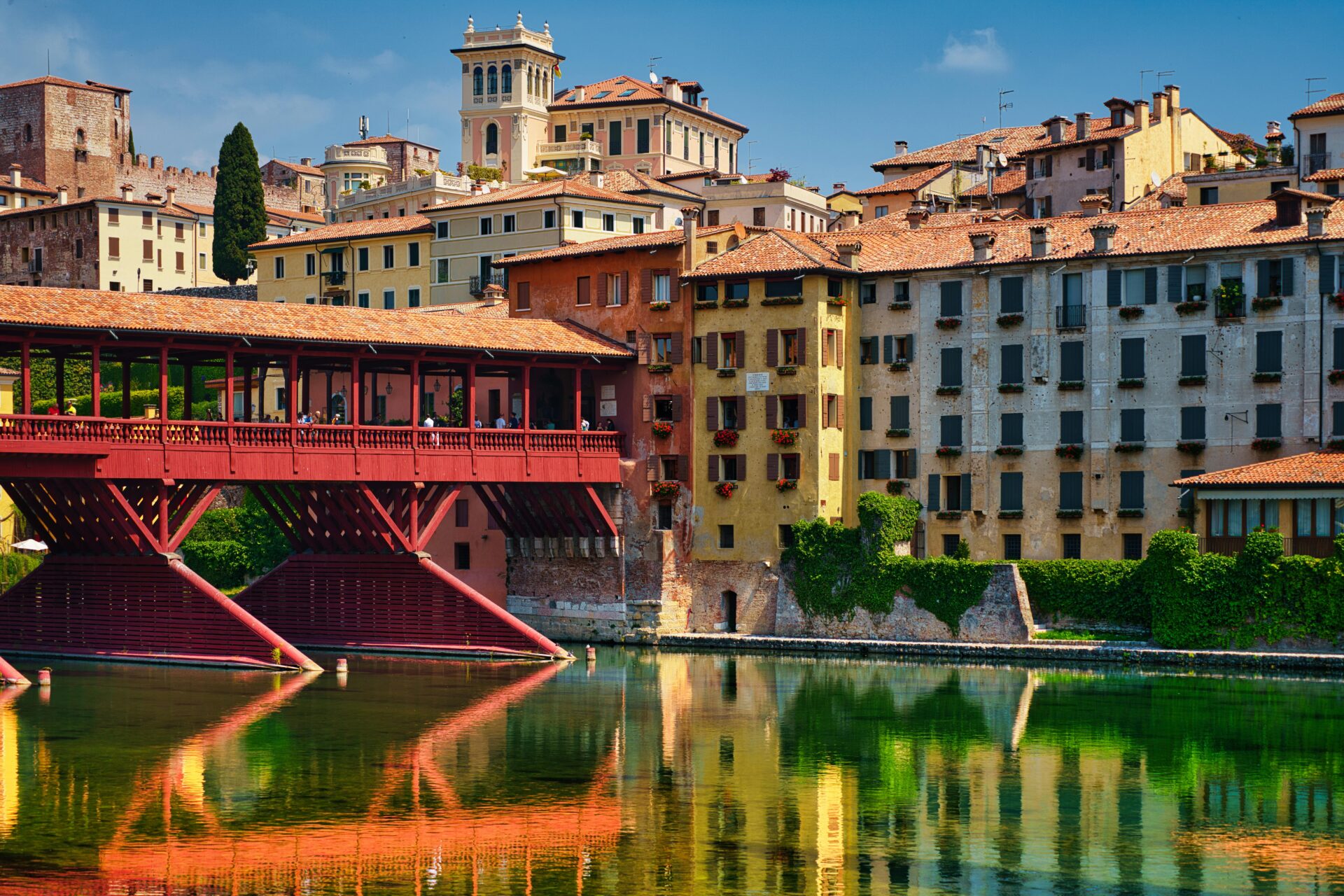
The Heart of Bassano: Ponte degli Alpini
Walking through Bassano del Grappa, I found myself drawn to its most iconic landmark – a wooden bridge that spans the Brenta River with mountain views as its backdrop. The Ponte degli Alpini stands as both an architectural wonder and a powerful symbol of the town’s history.
Andrea Palladio’s Architectural Marvel
The Ponte degli Alpini, also called Ponte Vecchio (Old Bridge), was designed by the famous Renaissance architect Andrea Palladio in 1569. Walking across its wooden planks, I felt the centuries of history beneath my feet.
The covered bridge features a wide pedestrian thoroughfare that makes crossing the Brenta River a delightful experience.
What struck me most was the bridge’s simple yet elegant design. Palladio created a structure that has endured for generations despite floods and wars. The wooden roof provides welcome shade on hot summer days, making it a perfect spot to pause and take in the stunning views.
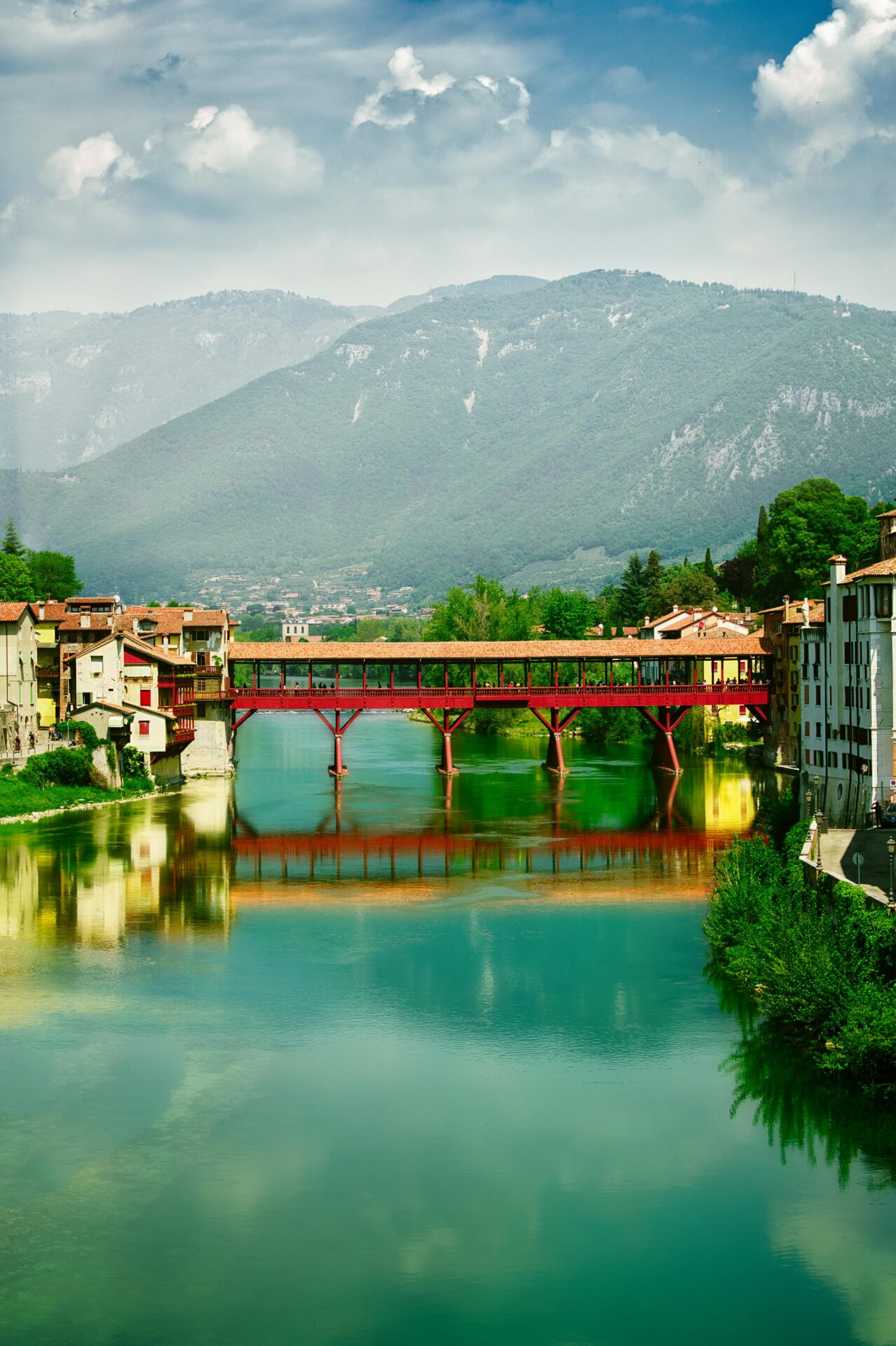
A Symbol of Heritage and Resilience
This isn’t just any bridge – it’s deeply connected to the identity of Bassano and the Veneto region. The structure has been rebuilt multiple times throughout its history, most notably after damage during World War I. The Alpine soldiers (Alpini) who reconstructed it gave the bridge its current name.
I noticed locals gathering here at sunset, some sipping grappa from the nearby historic distilleries. The bridge serves as both a meeting point and a reminder of Bassano’s resilience.
From the middle of the bridge, I enjoyed breathtaking views of the river below and the green mountains beyond. The cool breeze rising from the Brenta made it a refreshing spot even on warm days. For the best photos, I recommend visiting in the early morning when the light is soft and the crowds are thin.
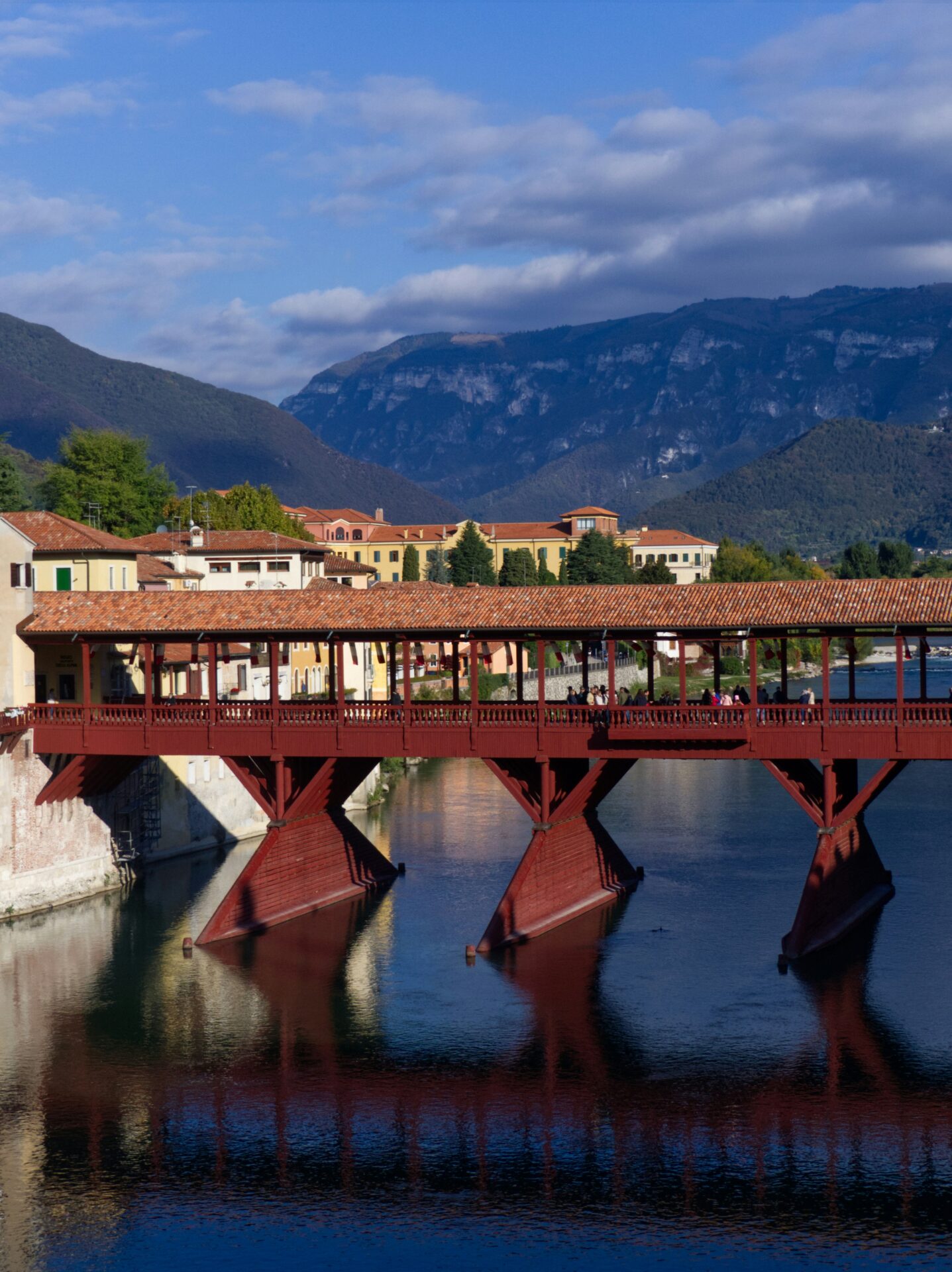
Savoring Bassano: Cuisine and Grappa Tasting
No trip to Bassano del Grappa is complete without indulging in its culinary treasures. The town’s food scene perfectly blends traditional Veneto flavors with the distinctive taste of its famous spirit.
Local Delicacies: Risotto to Tiramisu
Walking through Bassano’s charming streets, I couldn’t help but follow my nose to the inviting restaurants tucked along cobblestone alleys. The local cuisine here is hearty and satisfying, with risotto taking center stage on many menus.
I tried the creamy risotto all’Asparago Bianco di Bassano, made with the region’s prized white asparagus—a springtime specialty that locals celebrate with dedicated festivals. The tender asparagus gives the dish a subtle, earthy flavor that pairs perfectly with a glass of local Prosecco.
For dessert, tiramisu is a must-try. While its origins are debated across northern Italy, Bassano’s versions feature rich mascarpone cream layered with coffee-soaked savoiardi biscuits, often with a splash of local grappa adding a distinctive kick.
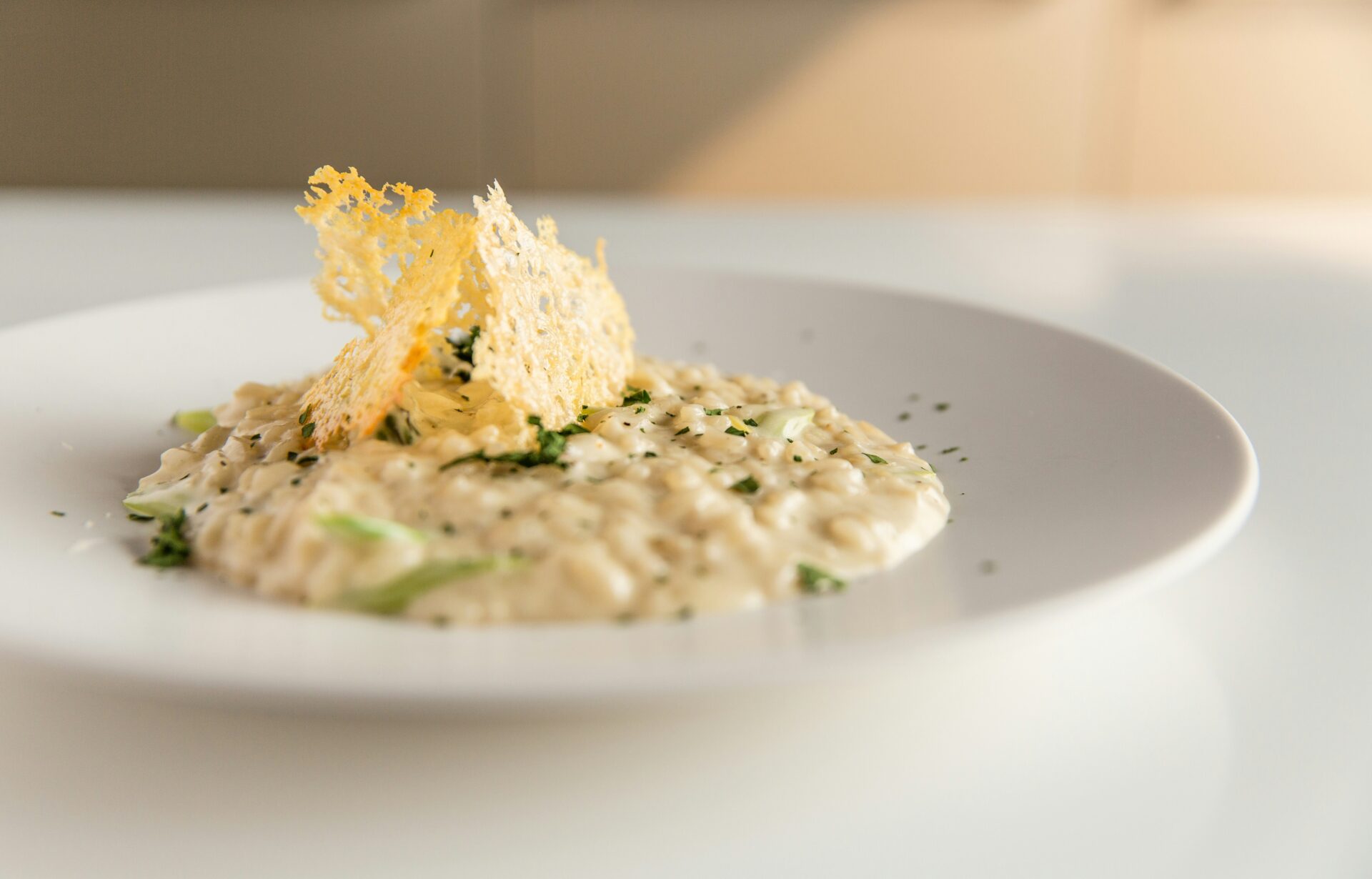
A Stop at Nardini: Italy’s Oldest Grappa Distillery
The highlight of my culinary adventure was visiting Nardini, Italy’s oldest grappa distillery established in 1779. Located right by the Ponte Vecchio, this historic institution has been perfecting the art of distillation for over 240 years.
I joined a tasting session where the guide explained how grappa is made from pomace—the grape skins, seeds, and stems left over from winemaking. Nardini produces several varieties, from clear, potent classics to smoother aged versions with amber hues.
The distillery’s elegant tasting room overlooks the Brenta River, creating the perfect setting to appreciate this strong spirit. Beyond traditional grappa, I sampled their Acqua di Cedro (citron liqueur) and Mezzo e Mezzo, a bittersweet aperitif that locals enjoy before meals.

Bassano’s Cultural Tapestry
Beyond its famous wooden bridge, Bassano del Grappa offers a rich cultural landscape that tells stories of artistic achievement, historical significance, and creative craftsmanship that has evolved over centuries.
Palazzo Sturm’s Ceramic Story
Walking along the Brenta River, I discovered the elegant Palazzo Sturm, home to one of Italy’s most impressive ceramic collections. The museum showcases the artistry of Bassano’s ceramics tradition dating back to the 16th century.
What makes this place special is how it displays the evolution of ceramic art in the region. The palace itself is a masterpiece of Venetian architecture, with its riverside position offering stunning views.
I was particularly drawn to the vibrant maiolica works with their distinctive blue decorations. Local artisans created pieces that combined practical functionality with artistic beauty – something that continues in Bassano’s workshops today.
The museum does an excellent job explaining the techniques and materials used through interactive displays. You’ll see everything from everyday plates to elaborate decorative pieces that once adorned noble homes.
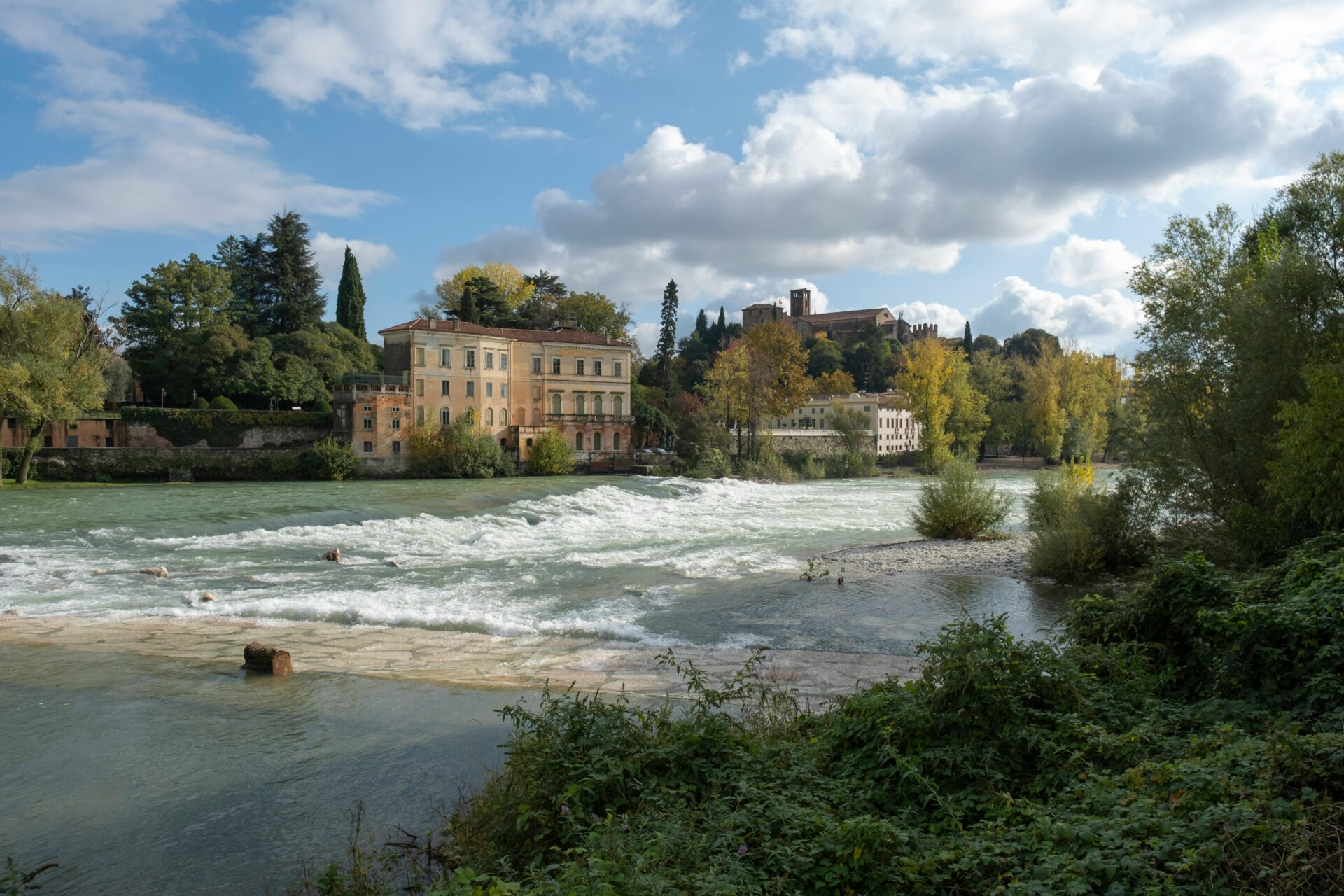
The Civic Tower and Museo Civico
The Torre Civica dominates Bassano’s skyline, standing guard over the central Piazza Libertà. This medieval tower offers more than just amazing views – it’s connected to the Museo Civico, which houses an impressive collection of local history and art.
As I climbed the tower’s ancient steps, each level revealed another chapter of Bassano’s story. The panoramic view from the top is worth every step – on clear days, you can see all the way to the Venetian plains.
The Museo Civico itself contains treasures spanning centuries. The collection includes:
- Renaissance paintings by local masters
- Historical documents about the town’s development
- Military artifacts from various periods
- Temporary exhibitions highlighting regional culture
What impressed me most was how the museum connects art to the town’s identity. Many works depict the wooden bridge and surrounding landscapes that have inspired artists for generations.
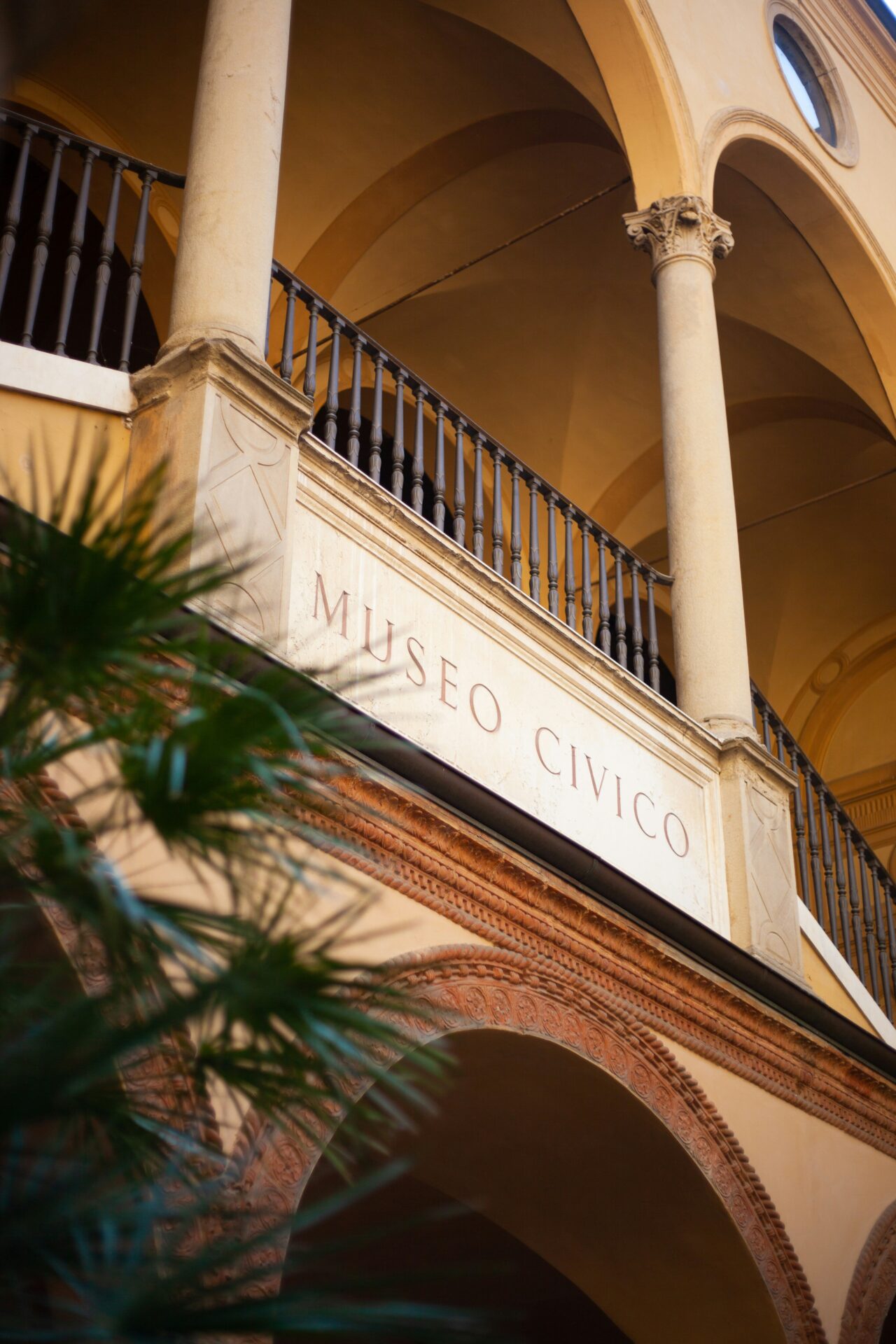
Legacy of Antonio Canova
Though born in nearby Possagno, the influence of neoclassical sculptor Antonio Canova is felt throughout Bassano. His works represent the pinnacle of Italian sculpture, with their perfect marble forms and emotional depth.
The Museo Civico houses several important Canova pieces, including plaster models and drawings that show his creative process. These preliminary works offer a rare glimpse into how the master planned his famous marble masterpieces.
I was fascinated by Canova’s connection to the region’s artistic traditions. His style transformed European sculpture and established standards that influenced generations of artists.
Local guides often point out how the natural beauty of this region shaped Canova’s aesthetic sensibilities. The same mountains visible from Bassano’s bridge appear in the backgrounds of many of his sketches.
Annual exhibitions and cultural events celebrate Canova’s legacy, drawing art lovers from around the world to this charming corner of Veneto.
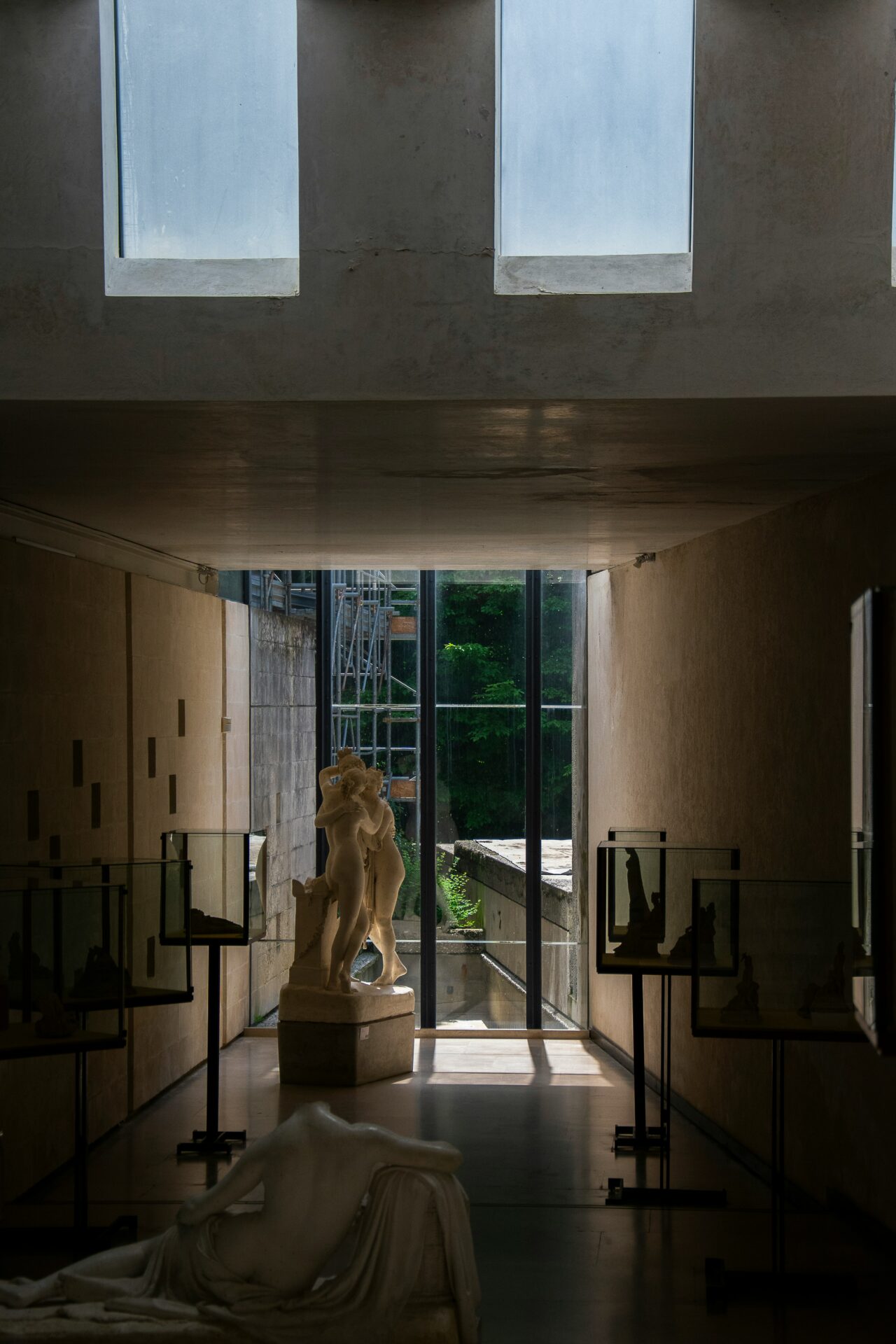
Hiking and Nature Trails
The surrounding landscape of Bassano del Grappa offers some of the most scenic hiking opportunities in the Veneto region. With over 22 trails ranging from easy riverside walks to challenging mountain hikes, nature lovers will find plenty to explore.
Breath of Fresh Air at Monte Grappa
Monte Grappa stands majestically at 1,775 meters, providing breathtaking panoramic views that make the climb worthwhile. I started my hike early in the morning to avoid the midday heat and followed one of the well-marked trails from the base.
The mountain holds historical significance as a major battlefield during both World Wars. Along the way, I discovered several memorial sites that tell the story of the region’s past.
The trails vary in difficulty, so I chose a moderate path that took about three hours to reach a good viewing point. The Alpine flora changes with elevation, creating a fascinating natural tapestry.
Don’t forget to pack plenty of water and snacks! The mountain weather can change quickly, so I always bring an extra layer even on sunny days.
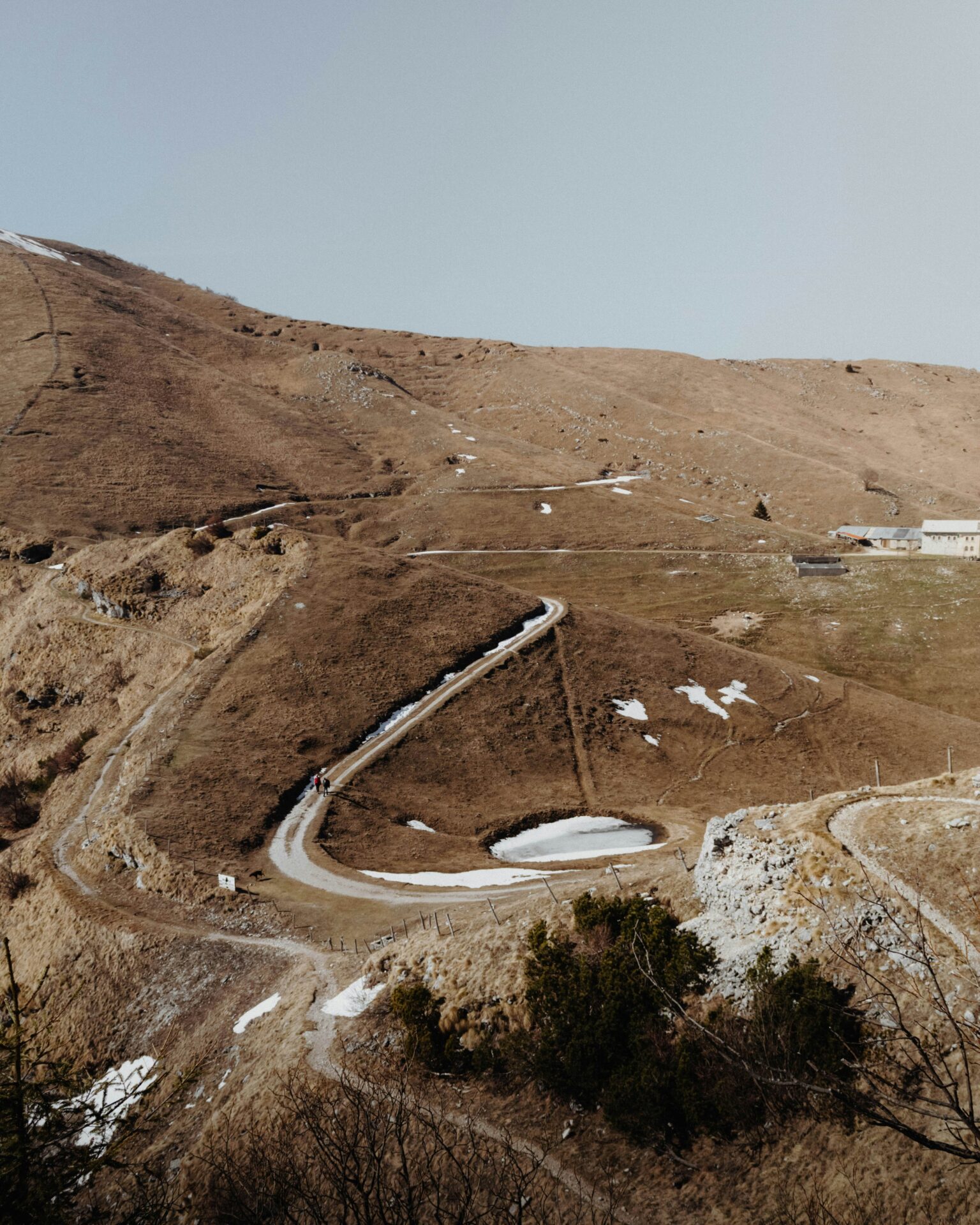
Following the River Brenta
The River Brenta offers gentler hiking experiences with paths that meander alongside its crystal-clear waters. These flat, easy trails are perfect for families or those looking for a more relaxed nature experience.
I particularly enjoyed the riverside path that begins near the famous Ponte Vecchio wooden bridge. The trail extends for several kilometers, offering stunning views of the water against the backdrop of the Alps.
During spring and summer, the banks burst with colorful wildflowers and birdsong fills the air. I often stop at one of the small clearings to enjoy a picnic while watching kayakers navigate the gentle rapids.
The path is well-maintained and accessible year-round, though autumn provides especially picturesque scenes with the changing foliage reflecting in the water.

Exploring the Surroundings
While Bassano del Grappa is captivating on its own, the surrounding area offers equally enchanting experiences. From historic cities to charming medieval towns and natural wonders, there’s plenty to discover just a short drive away.
Vicenza: A Renaissance Jewel
Just 30 minutes from Bassano, I found Vicenza to be an architectural marvel. This UNESCO World Heritage site showcases the genius of Andrea Palladio, whose buildings transformed the city’s landscape. The Teatro Olimpico particularly impressed me with its trompe l’oeil stage set that creates an optical illusion of depth.
Walking through the city center, I admired the elegant Basilica Palladiana with its distinctive green copper dome. The nearby Piazza dei Signori buzzes with locals enjoying their afternoon espresso.
For the best views, I climbed up to Monte Berico where the sanctuary offers panoramic vistas of Vicenza and the surrounding countryside. The city makes a perfect half-day trip from Bassano, with regular train connections making it easily accessible.
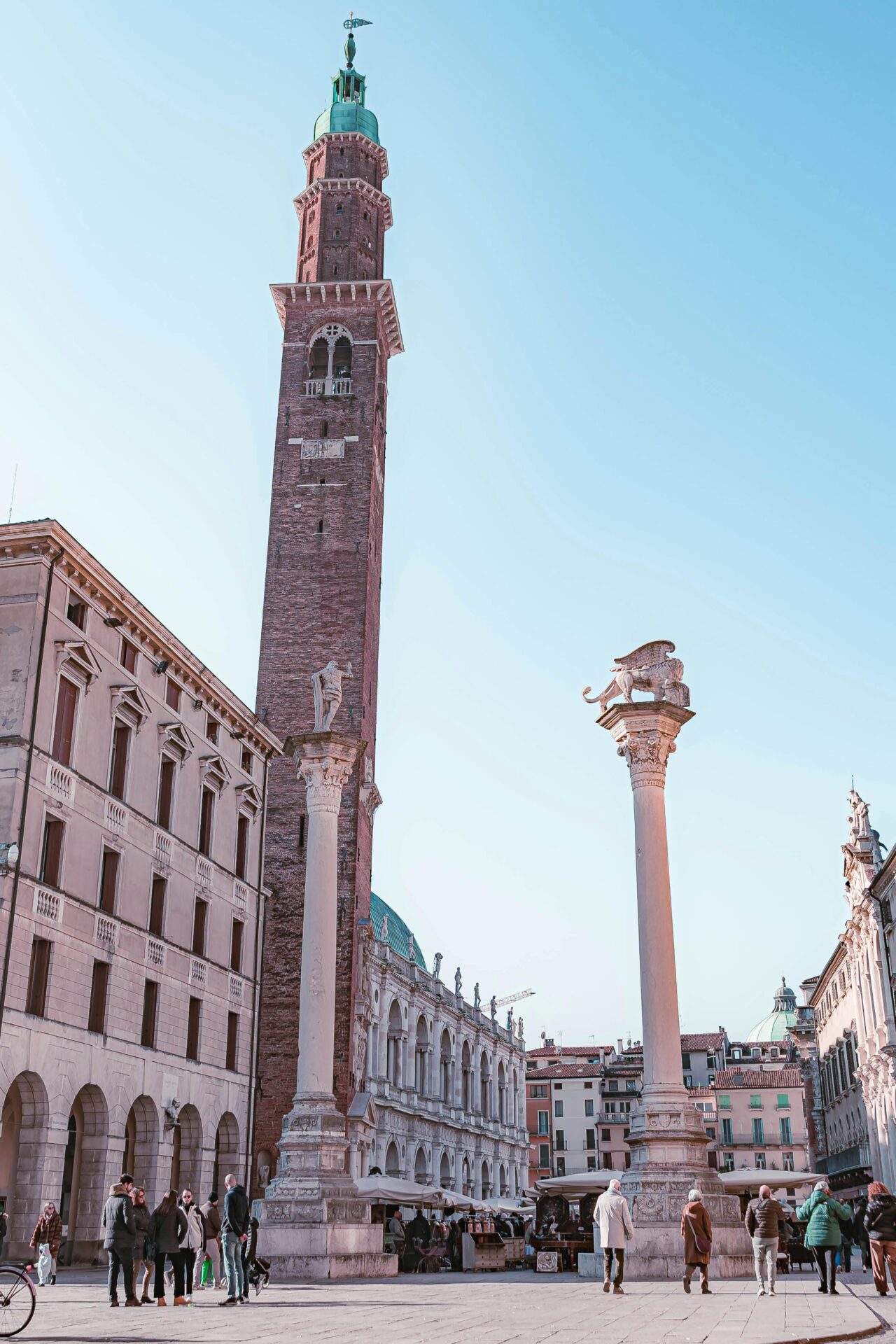
The Charming Towns of Marostica and Asolo
Marostica captured my heart with its giant chessboard plaza where human chess matches are played in September of even-numbered years. The town’s medieval walls and two castles create a fairytale atmosphere that I couldn’t resist photographing.
Asolo, nicknamed “The Pearl of Veneto,” sits on a hillside about 25 km from Bassano. Its narrow streets wind past Renaissance palaces and lead to breathtaking viewpoints. I spent a delightful morning exploring the central Piazza Garibaldi and sipping local wine at a café.
The Queen of Cyprus once lived in Asolo’s castle, adding a royal touch to this already enchanting town. Both Marostica and Asolo can be visited in a single day, though I’d recommend renting a car for easier travel between them.
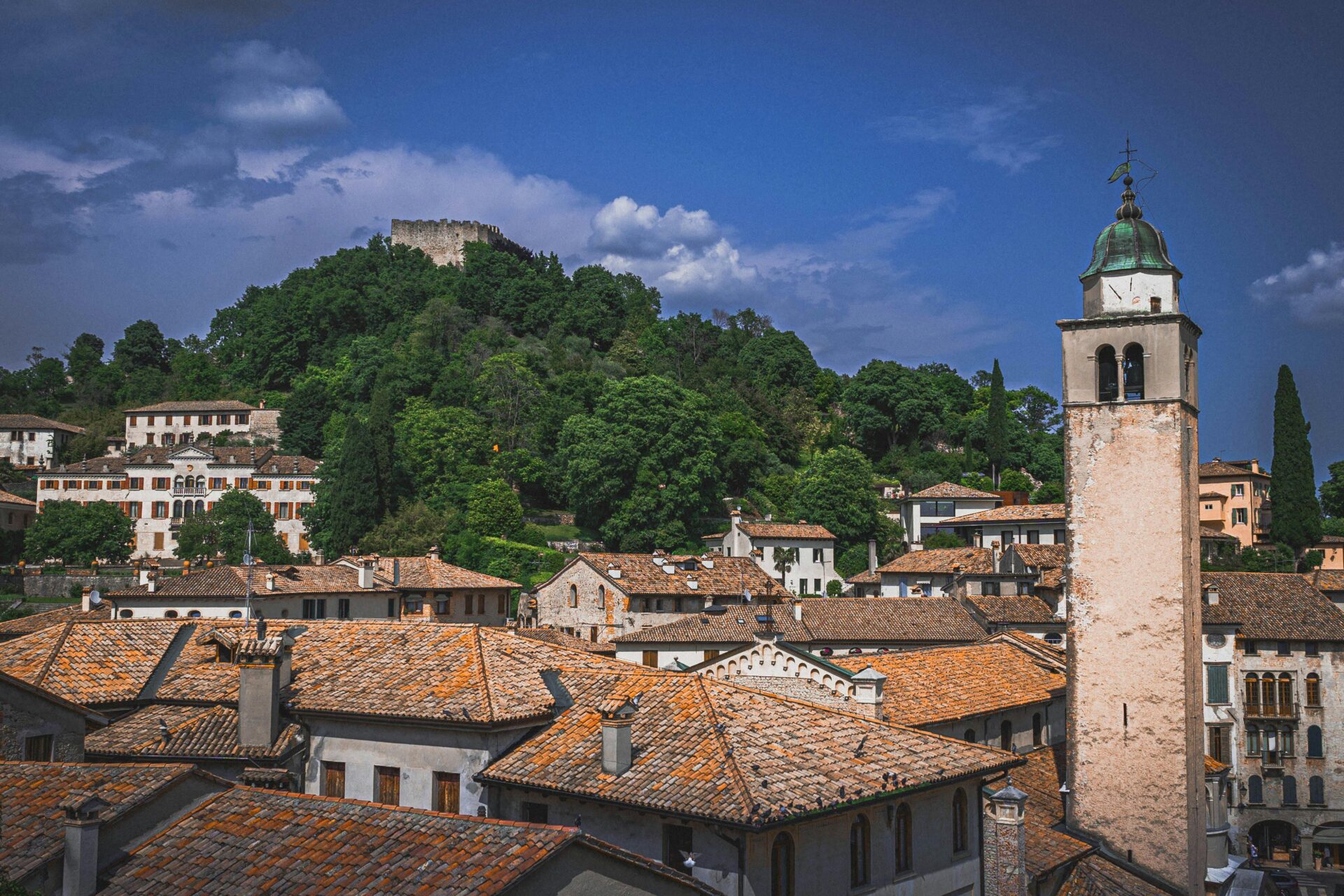
The Asiago Plateau’s Allure
The Asiago Plateau offers a refreshing escape to higher elevations. Famous for its cheese production, I couldn’t leave without bringing home some authentic Asiago DOP from one of the local caseifici (cheese factories).
In winter, the plateau transforms into a skier’s paradise with well-maintained slopes.
During summer, I enjoyed hiking through alpine meadows and forests, breathing in the crisp mountain air.
The Sacrario Militare del Leiten, a WWI memorial, provides a sobering reminder of the area’s history. From Bassano, I drove up the winding Viale dei Martiri, which commemorates 31 partisans executed during WWII.
The small town of Asiago itself has a charming pedestrian center where I found excellent restaurants serving regional specialties like bigoli pasta and mushroom risotto.

